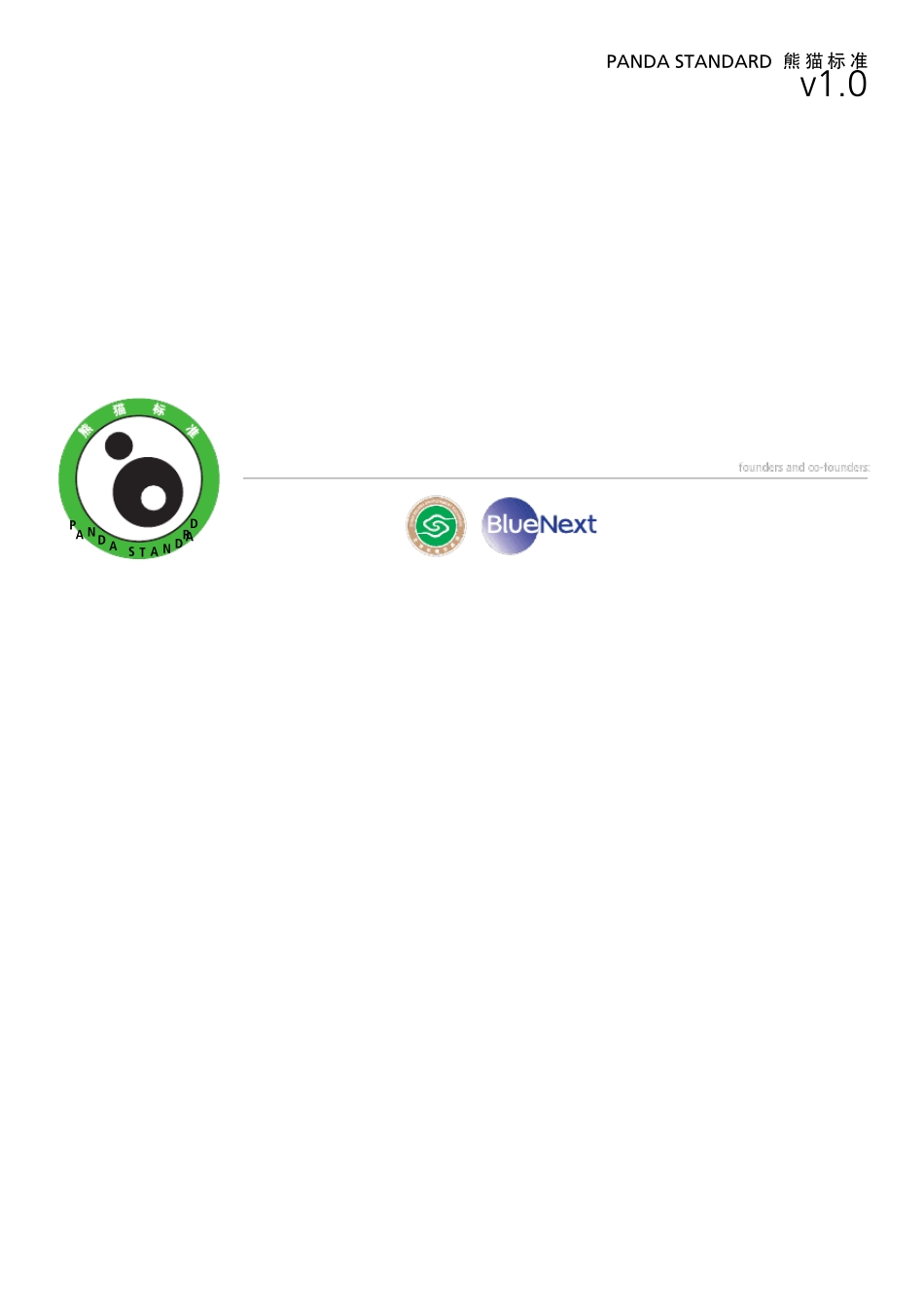PANDA STANDARD 熊 猫 标 准v1.0DRADNATS ADNAPCopyright © Panda Standard Association All rights reserved. 2009The global scientific community has now agreed that the warming of the climate is ‘unequivocal’ and that this observed change is linked to anthropogenic greenhouse gas emissions (IPCC 2007). Currently, the only viable systems to curb human-induced climate change are to reduce the quantity of GHG emissions and to remove existing GHG from the atmosphere. Current climate models predict that humans must reduce their current GHG emissions by 50-80% within the first half of the 21st century. This goal can be reached by achieving a rapid transition from high to low emitting technologies as well as altering land use practices.In September 2009, Chinese President Hu Jintao declared in his opening remarks at the UN General Assembly, that China will further incorporate climate change into its economic society’s development principles by strengthening energy saving and efficiency, pushing for the development of alternative energy, and increasing the carbon stocks of forests. These commitments to developing a low carbon economy in China were reiterated in November 2009, ahead of the UNFCCC COP15 conference in Copenhagen, with the China’s State Council announcing China’s pledge to voluntarily reduce its carbon intensity 40-45 per cent by 2020 against 2005 levels as “ a major effort in tackling climate change” .While only in the early stages of this low carbon society, some Chinese businesses and individuals are already willing to take actions to voluntarily reduce their carbon footprint by offsetting their activities with carbon credits from emission reduction and/or removal projects. Therefore, a market fo...


